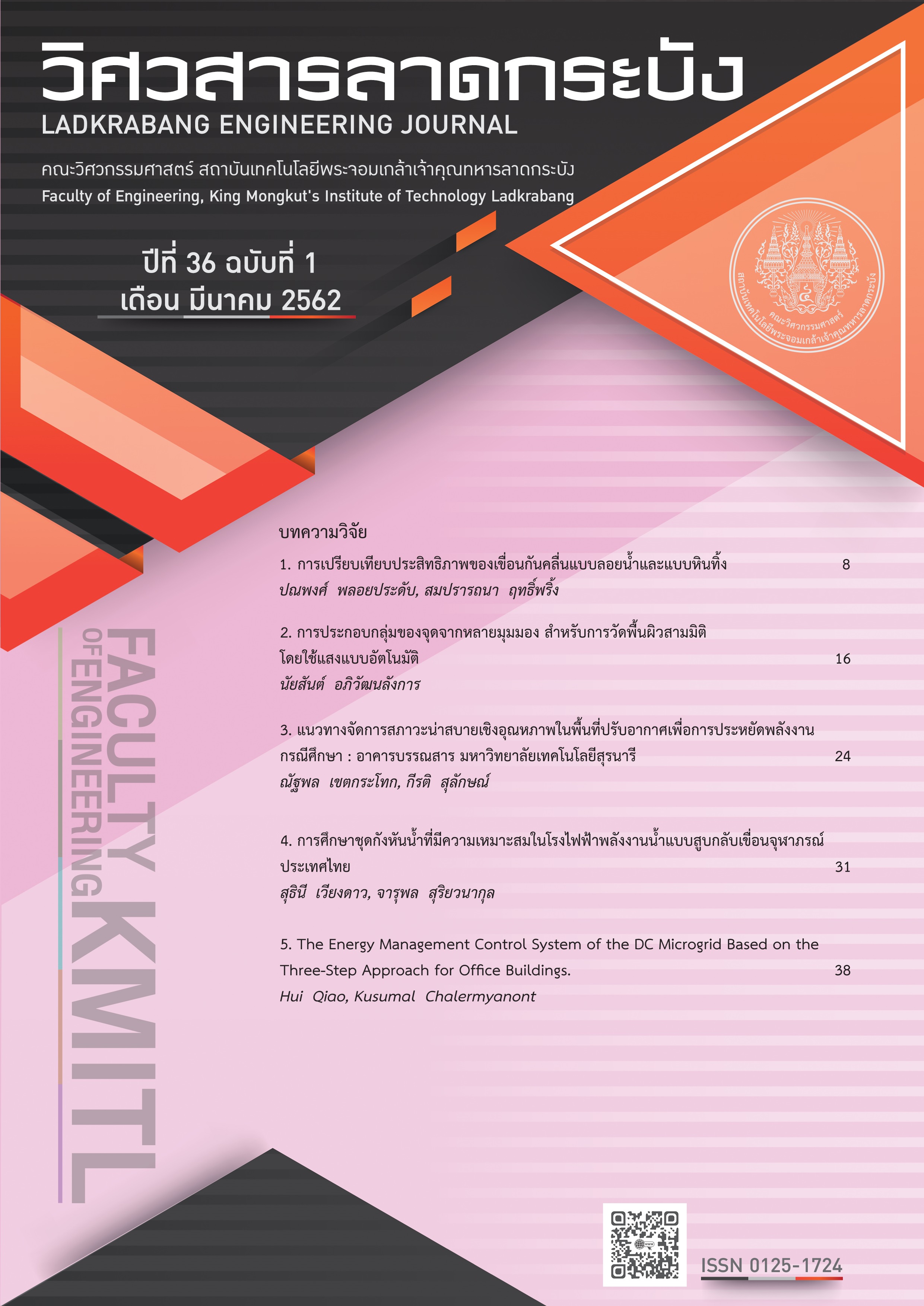Guidelines for The Management of Thermal Comfort Conditions in Air-Conditioned Areas for Energy Saving Case Study Library Building Suranaree University of Technology
Keywords:
Thermal comfort, building - energy conservation, Air-ConditionedAbstract
This article is to study and gather data on the thermal conditioning area in the Library building Suranaree University of Technology. The concrete building has 6,500 square meters of usable space in the building. Cold air has a total of 32 series, representing 3,618,000 Btu/h. The average consumption is 113,354 kWh/month. The study monitoring and data collection on 4-15 March 2562 at 10:00 am - 15.00 pm. Including temperature sensing Measuring wind speed Humidity Measurement. The service area Library building's average temperature was 24.18˚C, humidity 35.75%, wind speed 0.46 m/s. When the values stated in the CBE Thermal Comfort Tool (ASHRAE Standard 55-2017) for the PMV. In the service area Library building of the weather is quite cold - cold. This condition does not match the scope of standard comfort ASHRAE Standard 55-2017. The need to adjust the temperature to rise to match the boundary conditions 2˚C comfort standard ASHRAE Standard 55-2017. It can also reduce energy consumption further. 20% of energy consumption from air conditioning.
References
Climate center Bureau of Meteorological Development(2559).Generalweathersummary2016. Retrieved January 20, 2017 from https://www.tmd.go.th/climate/climate.php?FileID=5.
ASHRAE. (1992). ANSI/ASHRAEStandard 55-1992. Atlanta: Author.
WanTani Panprasit.(2006).Ventilation in industrial plants. Bangkok Thammasan Printingfactory Phra Nakhon District
Khedari,J.,Yamtraipat,N.,Pratintong,N.,& Hirunlabh,J.Thailand Ventilation Comfort chart.Energy and Buildings, 2000
Fanger PO.1972. Thermal comfort analysis and application in environmental engineering. McGraw-Hill, NewYork, p. 244.
Surat Atthariyakul. 2007. “Effects of specific wind speed on comfort and energy saving in air-conditioned rooms” KKU Engineering, Year 34, Issue No. 1 :49-58
https://www.e-report.energy.go.th /kpi59m_files /PDF_EUIBOOK2559.pdf
Downloads
Published
How to Cite
Issue
Section
License
The published articles are copyrighted by the School of Engineering, King Mongkut's Institute of Technology Ladkrabang.
The statements contained in each article in this academic journal are the personal opinions of each author and are not related to King Mongkut's Institute of Technology Ladkrabang and other faculty members in the institute.
Responsibility for all elements of each article belongs to each author; If there are any mistakes, each author is solely responsible for his own articles.






